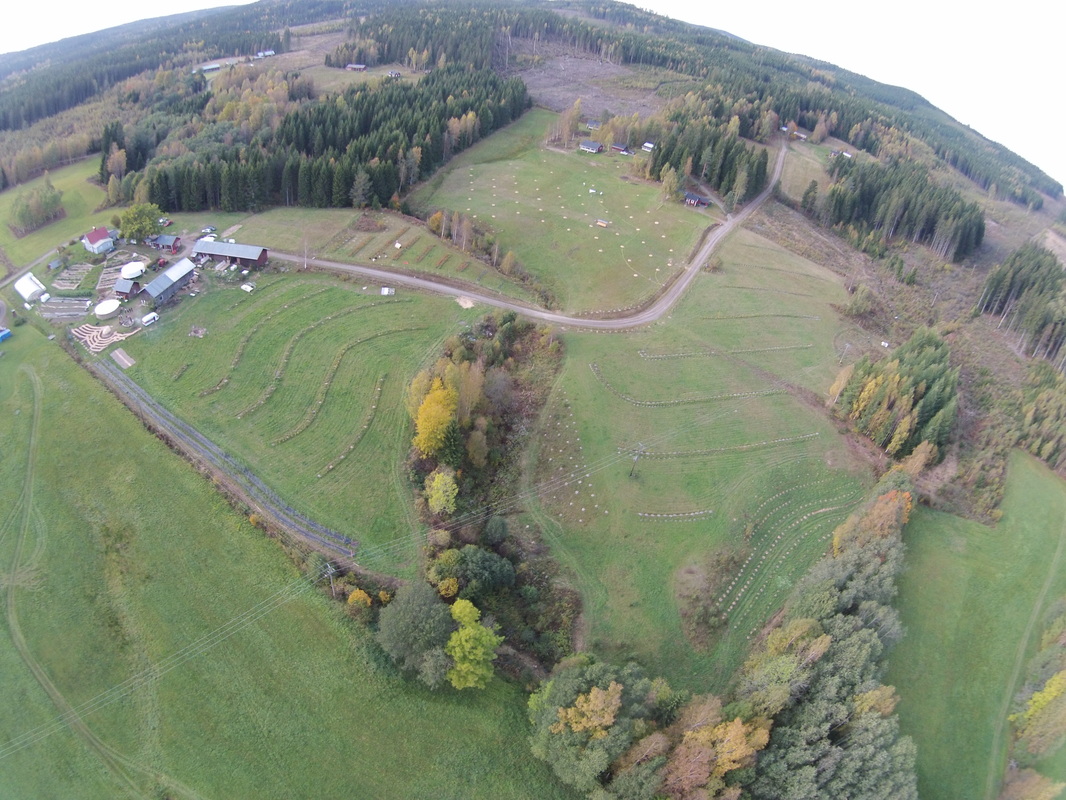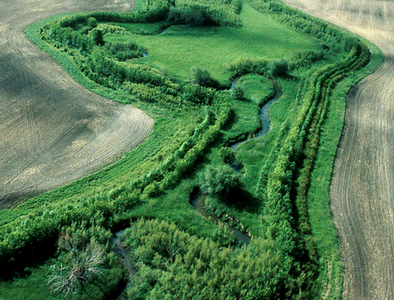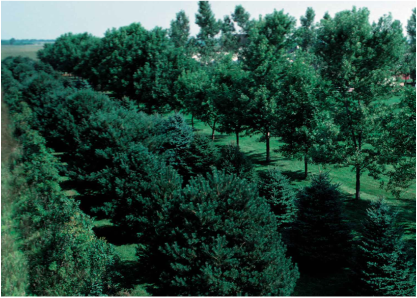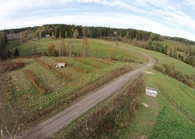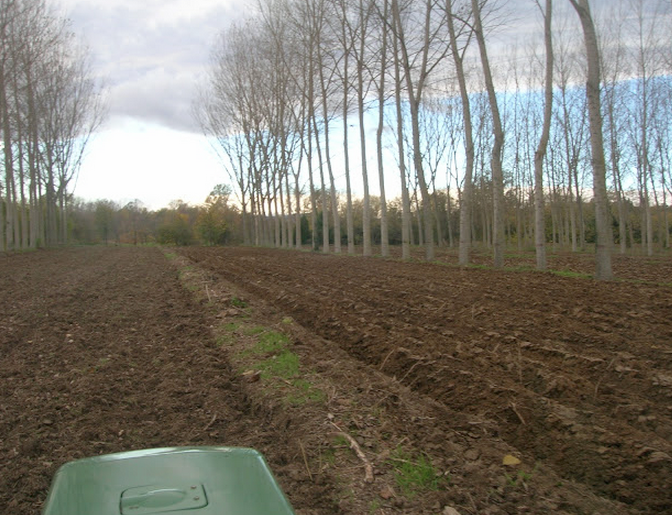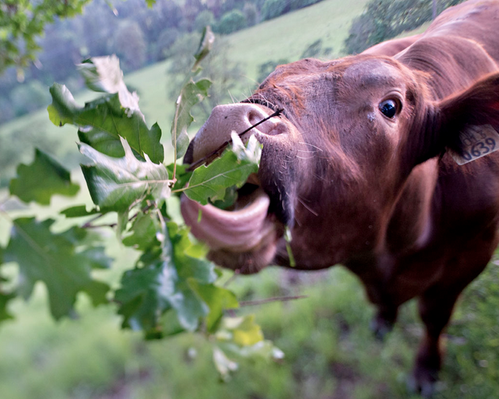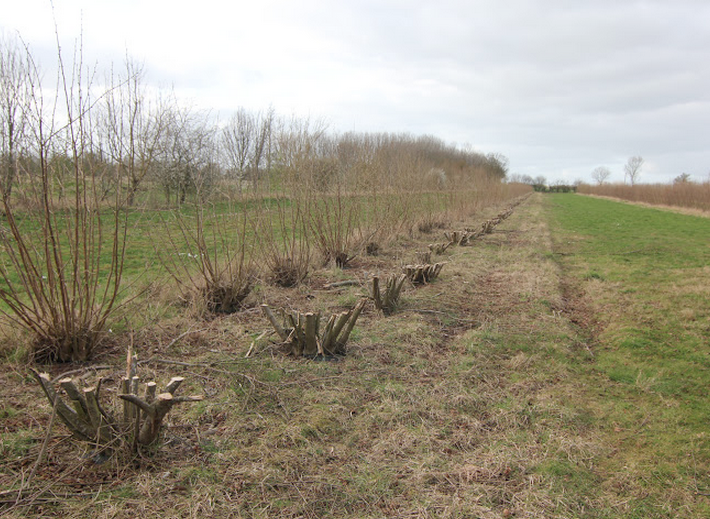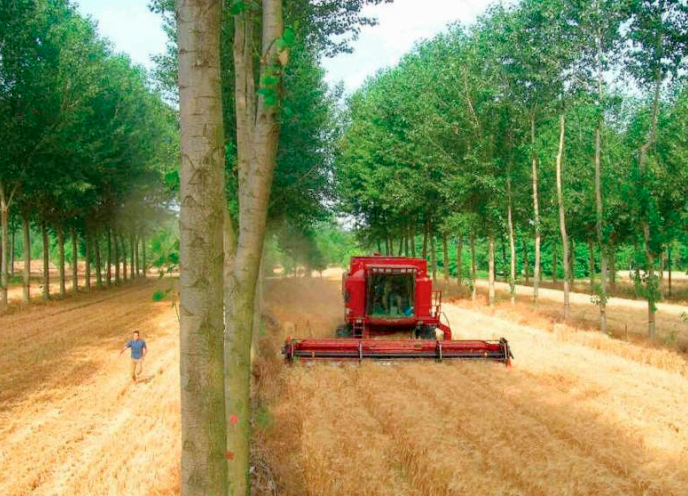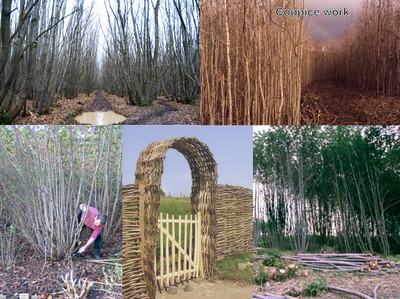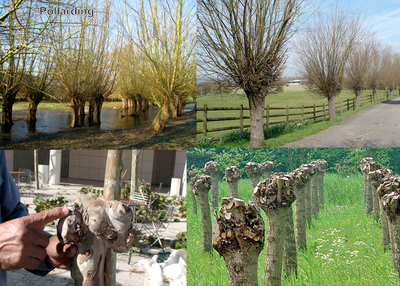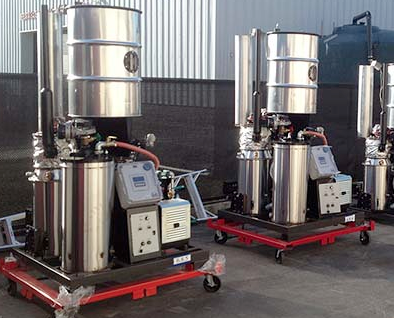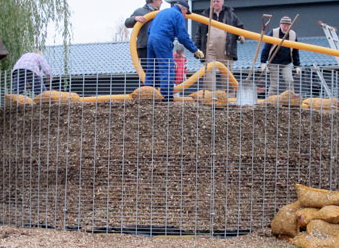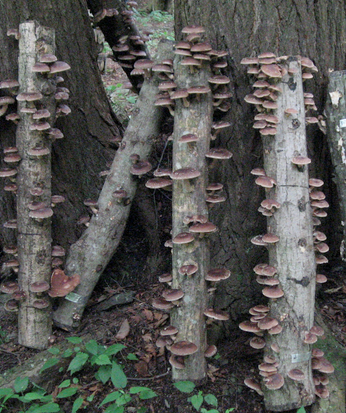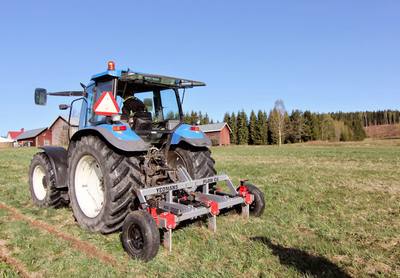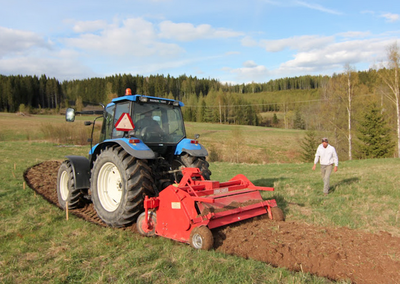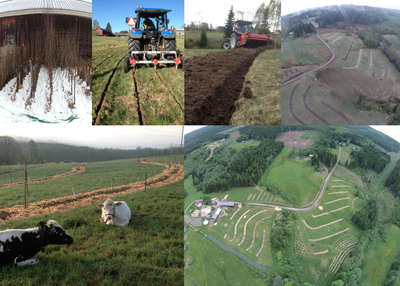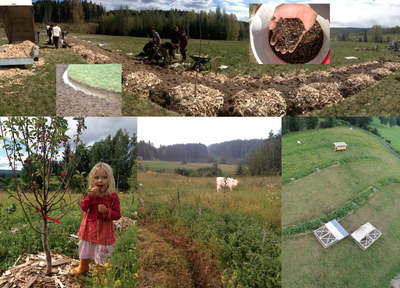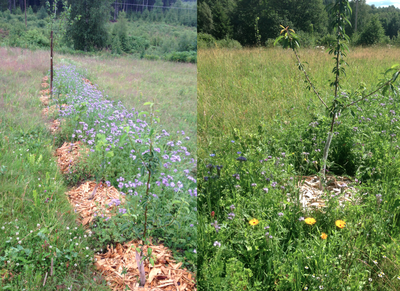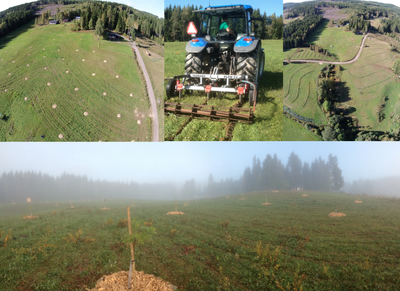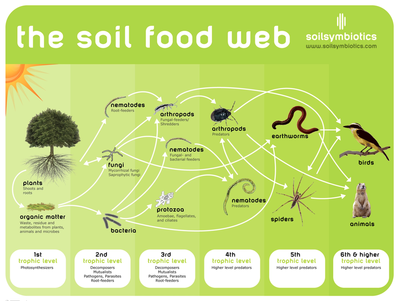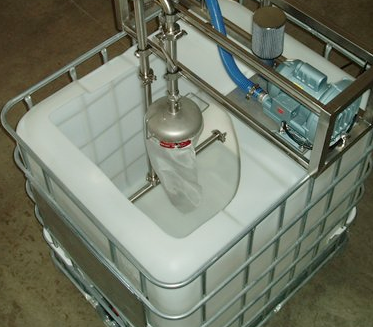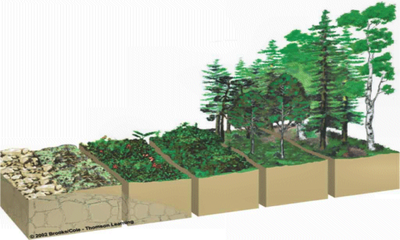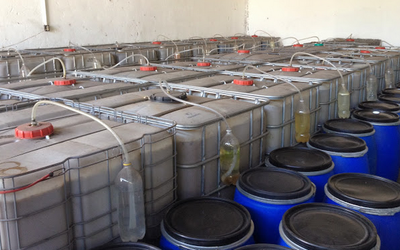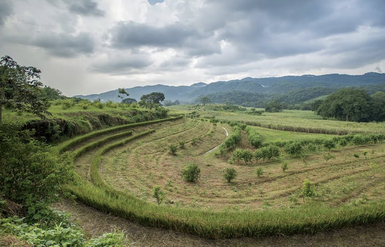 Keyline Silvoarable & Silvopasture systems, Mexico. Pic above is part of the original design from MasHumus/ Jesús Ruiz Gámez. We've been contributing to this ranch as well as another ranch that forms part of this property
Keyline Silvoarable & Silvopasture systems, Mexico. Pic above is part of the original design from MasHumus/ Jesús Ruiz Gámez. We've been contributing to this ranch as well as another ranch that forms part of this property
Agroforestry is a land-use system that combines agriculture and forestry technologies to create a more integrated, diverse, productive, profitable, healthy, and sustainable land-use system especially beneficial to the small scale farm. Within the agricultural landscape the use of trees is varied; from moderating microclimate to producing multiple additional yields we are yet to find a farm that wouldn't benefit from more trees. Agroforestry systems vary greatly, as you can see from some of the examples of how we design trees into farm systems on this page. Well designed permanent plant coverage means we can control runoff and soil erosion, thereby reducing losses of water, soil material, organic matter and nutrients. These systems maintain more favorable soil physical properties than intensive annual agriculture, through organic matter maintenance and the effects of tree roots. This allows maintenance of soil organic matter and biological activity at levels satisfactory for soil fertility (This depends on an adequate proportion of trees in the system, normally at least 20% crown cover of trees to maintain organic matter over systems as a whole).
Tree based systems not only help close nutrient cycles, but can increase nutrient inputs into systems by retrieval of mineral from lower soil horizons and weathering rock which can be deposited on the surface for other organisms to assimilate. Self- mulching, multi-level photosynthetic harvesting that can check the development of soil toxicities, or reduce existing toxicities (both soil acidification and salinization can be checked) these systems can even be employed in the reclamation of polluted soils. By using Nitrogen-fixing trees & shrubs we can substantially increase nitrogen inputs to systems, reducing reliance on external inputs; an essential aspect of future- proof Ag.
Agroforestry practices may use only a few % of the farming land area in Europe yet account for over half of the biodiversity, improving wildlife habitat and harboring birds and beneficial insects which feed on crop pests. Tree biodiversity adds variety to the landscape and improves aesthetics for us humans too. The release of nutrients from the decomposition of tree residues can be synchronized with the requirements for nutrient uptake of associated crops. While different trees and crops will all have different requirements, and there will always be some imbalance, the addition of high-quality pruning's to the soil at the time of crop planting usually leads to a good degree of synchrony between nutrient release and demand.
Agroforestry can provide a more diverse farm economy and stimulate the whole rural economy, leading to more stable farms and communities. Economic risks are reduced when systems produce multiple products. Installing future- proof perennial systems does not need to be overly complicated, as we have demonstrated at our farm and helped many others with too. Our design work is built upon the foundation of Keyline Design, and so typically trees are placed in particular geometrical relationship to the landform. This is not always the case and some of the main patterns we work with are outlined below.
Tree based systems not only help close nutrient cycles, but can increase nutrient inputs into systems by retrieval of mineral from lower soil horizons and weathering rock which can be deposited on the surface for other organisms to assimilate. Self- mulching, multi-level photosynthetic harvesting that can check the development of soil toxicities, or reduce existing toxicities (both soil acidification and salinization can be checked) these systems can even be employed in the reclamation of polluted soils. By using Nitrogen-fixing trees & shrubs we can substantially increase nitrogen inputs to systems, reducing reliance on external inputs; an essential aspect of future- proof Ag.
Agroforestry practices may use only a few % of the farming land area in Europe yet account for over half of the biodiversity, improving wildlife habitat and harboring birds and beneficial insects which feed on crop pests. Tree biodiversity adds variety to the landscape and improves aesthetics for us humans too. The release of nutrients from the decomposition of tree residues can be synchronized with the requirements for nutrient uptake of associated crops. While different trees and crops will all have different requirements, and there will always be some imbalance, the addition of high-quality pruning's to the soil at the time of crop planting usually leads to a good degree of synchrony between nutrient release and demand.
Agroforestry can provide a more diverse farm economy and stimulate the whole rural economy, leading to more stable farms and communities. Economic risks are reduced when systems produce multiple products. Installing future- proof perennial systems does not need to be overly complicated, as we have demonstrated at our farm and helped many others with too. Our design work is built upon the foundation of Keyline Design, and so typically trees are placed in particular geometrical relationship to the landform. This is not always the case and some of the main patterns we work with are outlined below.
Keyline Silvoarable/ Silvo Pasture SystemsFollowing a Keyline layout strips of orchard trees, timber or forage are installed on 8- 40m spacings with annual cultivation or pasture lanes between. Solar orientation is weighed up with the beneficial water distribution patterning of the landscape, and designed accordingly. For optimal establishment see "Installation" below. Trees are protected by mobile electric/ permanent fencing from stock at least until establishment. For more detail of this system see this article. Can be performing multiple functions such as acting as a shelter belt & additional forage source. Ideally underplanted with diverse range of support plants.
|
Savannah Style Plantings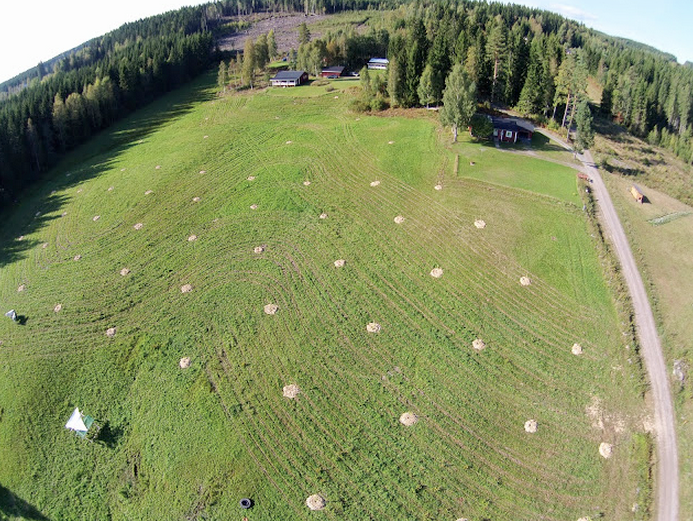 Various nut being trialled at Ridgedale Permaculture Various nut being trialled at Ridgedale Permaculture
From S. America to Africa, Australia to Europe, Savannah systems are a grassland ecosystem characterized by the trees being sufficiently widely spaced so that the canopy does not close, despite sometimes having a high tree density. From nut orchards to masting forage systems, savannah style systems can be extremely productive & stable farming systems. Lone trees can become the obvious camping ground for stock, leading to compaction and over supply of nutrient which may cause premature death. Ideally underplanted with a guild of mutually beneficial understory species; plant, animal and importantly, fungal.
|
OrchardsA standard orchard can be maintained with holistically managed livestock such as sheep or geese. Often there is room for additional layers of cropping or even the introduction of annuals. Trees are ideally fenced off and underplanted with guilds of compatible understory species creating a mosaic of diversity amongst an otherwise grassed ecosystem. Specific species can be chosen for extra function like fruit production, habitat, N-fixation, wildlife attraction etc. The practice of orchard hygiene can be carried out exclusively by livestock if timing is managed appropriately, whilst dealing with next years fertility simultaneously.
|
Riparian BuffersA riparian buffer is a vegetated protective zone surrounding a stream, river or water body. They shade and partially protect a stream from the impact of adjacent land uses, filter water entering the system as well as physically holding the banks together. With the decline of many aquatic ecosystems due to agricultural production, riparian buffers have become a very common conservation practice aimed at increasing water quality and reducing pollution, and feature in all our design work when water systems are present where we recommend they remain fenced permanently from animals.
|
Windbreaks |
Road & Avenue's |
Other important arrangements
Laid living hedgerows, coppicing & pollarding...
Other Woody Ag Products
Forest systems are already valued for their ecosystem services widely, but it is likely there will also be a return to valuing timbers above more modern building materials as industrial fabrication drops in productivity. From biochar for soil remediation, animal bedding & Carbon sequestration to turn- key Wood Gasifiers to power the farm with electricity whilst producing biochar as waste, things are moving in a very positive direction. Truly regenerative technology in the form of Jean Pain wood based compost is under scrutiny around the globe now, with constant advancement. Our own experiments will continue next year to see what we can do with spruce, given we have so much at our disposal. Heat is the output, farm scale compost the residue. Mushrooms and other high value niche crops are also worth a mention.
Installation
Our Yeoman's 6SB Keyline Plow and Simon Bedformer give exceptional results for establishing long lived perennial systems. We pull the Keyline plow through first as a "ripper", achieving depths of up to 75cm which literally shatters subsoil compaction and prepare ground for rapid root establishment. The Bedformer is usually worked 1- 3 times to produce a good tilth for cover cropping and if patterned on Keyline geometry creates cuts that help center water in ridge centers, leading to more even distribution of water that moves more slowly through the landscape. We have designed & worked on Agroforestry systems in various parts of the world, and this is the most optimal set up we have come across. If you are local you can rent the rig to get your systems established right, more details here.
Amendments, Soil Food Web Technology & Bio Fertilisation
At the time of planting agroforestry systems we have the opportunity for any soil amendments. We typically like to keep nutrition low and out of the planting hole to encourage root development and limit initial vegetative growth. We utilize material like Kelp extract, Sugarcane Molasses, Rock Dust, Biochar and Mychorrizal Fungal inoculant with deep woody mulches (preferred) or plastic mulch matting to restrict grass competition. All the above materials are essentially fungal food, which help kick start the succession the way we want it to go.
A healthy Soil Food Web can help suppress disease (competition, inhibition, consumption), help retain nutrients (stop run-off, leaching) as well as ensuring nutrients are available at rates plants require (eliminate fertilizer) leading to flavor and nutrition for animals and humans. There are a plethora of beneficial micro- organisms also decompose toxins and are essential for the creation of flocculated soil, ie, they build Soil Structure (reduce water use, increase water holding capacity, increase rooting depth). We make composts and Actively Aerated Compost Tea (AACT) for various applications. Perennial crops require compost & compost teas that are optimized for fungal populations (as opposed to annual crops/ grasslands which are bacterially dominated through to fungal: bacterial balanced) When implementing these systems into pasture/ arable land we recommend the use of Soil Food Web Technologies, which can be utilized as an add- on to the Yeoman's set up (injecting AACT into the broken up subsoil) or using an ATV sprayer, for example.
A healthy Soil Food Web can help suppress disease (competition, inhibition, consumption), help retain nutrients (stop run-off, leaching) as well as ensuring nutrients are available at rates plants require (eliminate fertilizer) leading to flavor and nutrition for animals and humans. There are a plethora of beneficial micro- organisms also decompose toxins and are essential for the creation of flocculated soil, ie, they build Soil Structure (reduce water use, increase water holding capacity, increase rooting depth). We make composts and Actively Aerated Compost Tea (AACT) for various applications. Perennial crops require compost & compost teas that are optimized for fungal populations (as opposed to annual crops/ grasslands which are bacterially dominated through to fungal: bacterial balanced) When implementing these systems into pasture/ arable land we recommend the use of Soil Food Web Technologies, which can be utilized as an add- on to the Yeoman's set up (injecting AACT into the broken up subsoil) or using an ATV sprayer, for example.
We make BioFertilisers based on the work of COaS & MasHumus (Mex) to deal with nutrient cycling in production situations.
This is an anaerobic
process, somewhat simulating the stomach of a cow, hence the use of fresh
manure or rumen. It must have a perfect air lock that will last 2-4
months without leaking and is typically formulated as a farm ready NPK replacement. This is a foliar spray that can be tailored to different crops if required which we use on annual crops, our pasture and tree systems using ATV sprayer, or on a small scale a simple back- pack sprayer.
Links & Resources
WorldAgroforesTree Database
Species info and selector from World Agroforestry Center
Apios Institute for Regenerative Perennial Agriculture
User-generated database of useful perennials, polycultures, and food forests for cold climates.
Food Plants International
Database of 18,000 edible plants.
The Plant List
Correct scientific names and synonyms for 300,000 species.
Plants for a Future
7,000 useful plants for temperate climates.
USDA Plants
Native and naturalized species (including range maps) of US and Canada
Species info and selector from World Agroforestry Center
Apios Institute for Regenerative Perennial Agriculture
User-generated database of useful perennials, polycultures, and food forests for cold climates.
Food Plants International
Database of 18,000 edible plants.
The Plant List
Correct scientific names and synonyms for 300,000 species.
Plants for a Future
7,000 useful plants for temperate climates.
USDA Plants
Native and naturalized species (including range maps) of US and Canada
